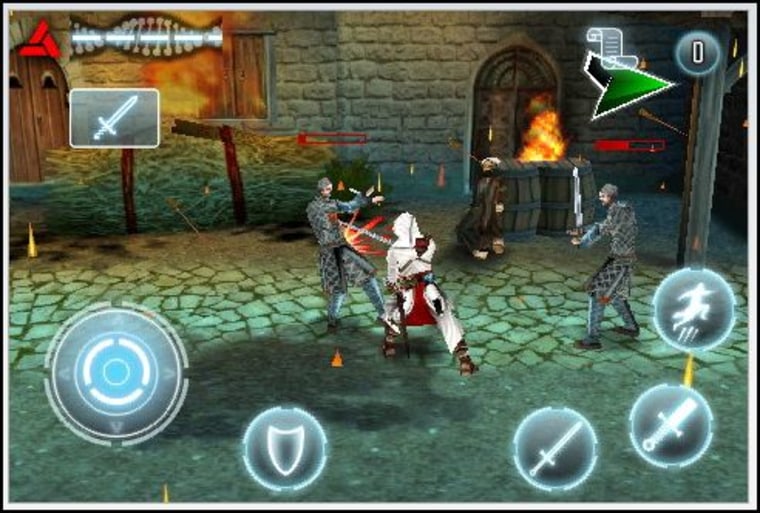How much are you willing to pay for an iPhone game?
Would you pay 99 cents? How about $1.99? Do I hear $4.99 … maybe $9.99? Would you pay $20? What’s that you say? You want your iPhone and iPod touch games for … free?
You know that adage; nothing in life is free? Turns out, that’s not exactly true. Just check out Apple’s App Store and you’ll find thousands of games that cost exactly nothing … or pretty close to it.
The App Store — an online outlet for useful, entertaining and sometimes bizarre programs for the iDevices — has been live and kicking for nine months now, and as of last week consumers had already downloaded one billion apps from the store. Yes … one billion.
Of the more than 35,000 programs currently available, games make up the biggest category in the App Store. In fact, there are currently more than 9,000 of them to be had.
But if you look at the App Store’s daily lists of the top 100 paid-for games, you’ll notice something — on a typical day more than half of them cost $1.99 or less. And that doesn’t count the more than 2,000 games you’ll find for free.
The question then is: Do you get what you pay for? And is this kind of rock-bottom pricing good for gameplay and the future of Apple’s new gaming handheld? More importantly, which games are actually worth spending money on?
Steve Palley, founder of iDevice game-review site SlideToPlay.com and former Editorial Guru for Vivendi Games Mobile, believes this bottom-of-the-barrel pricing could be unhealthy for iPhone game developers and for game quality.
“It’s going to be a problem in the long run, simply because it'll stunt the profit potential on these games,” he says. “I think this has been disguised somewhat by the iPhone's tremendous organic growth, but eventually it'll turn the App Store into a slum full of lazy match-three clones.”
Welcome to the slum
Palley makes a good point. Check out the App Store today and you’ll find that many of the games are not worth the time it takes to download them. Lazy match-three clones, goofy gags that are amusing for five minutes — yes there are thousands of games in the App Store, but sometimes it feels like wading through an ocean of garbage.

On the other hand, the App Store offers some truly brilliant and totally unique games. Here developers of all stripes can create games for a relatively low cost and gamers can try them for almost nothing. In many ways, this has created a breeding ground for creativity as both creators and consumers feel free to take risks. And those risks can pay off big time — just check out awesome experimental games like “Zen Bound” and “Ancient Frog” (but more on the games worth paying for here).
Still, it seems App Store customers have grown used to paying pocket change for their games. Even a game like “Bejeweled 2” (the mother of all match-three games) started out at $9.99 in the App Store and is now on sale for $2.99.
Among those who make App Store games, “there’s definitely been a race to the bottom in terms of pricing,” says Andrew Stein, director of mobile business development at PopCap Games (the creator of “Bejeweled”).
And that can mean developers have to walk a careful line. PopCap decided to price their latest iPhone game — “Bookworm” — at $4.99 instead of $9.99.
“We need to be cognizant of some of the competitive pressures, but at the same time our games offer huge value to the consumer,” Stein says. “We’re not interested in devaluing the brand by pricing it at 99 cents. It is a premium experience. We do invest a lot in our products. We take the time and do it right.”
Palley has been an advocate of getting deeper and more complex games into the App Store — the kind of games that rival those on the Sony and Nintendo handhelds.
“We want better, more expensive games, but not enough people are willing to pay for them to make them profitable. It sucks,” he wrote in a recent article on SlideToPlay.com. “For now, the main use case for the majority of people who buy iPhone and iTouch games is the one-to-five minute ‘gameplay snack.’ They want novelties and amusements, not gameplay.”
Getting what you pay for Palley believes that if things are going to change for the better Apple needs to take more of a leadership role.
“It’s basically adopted this laissez-faire attitude while this wonderful thing it's created is growing out of control,” he says. “It’s marketing the fact that you can play games on these devices rather heavily, but there's no discrimination or strategy behind the push, and it’s failing to do many of the things that make gaming platforms successful: segment the market, set pricing expectations, coordinate marketing with publishers, and so on. Structurally, the App Store is still a mess, and the ‘self-regulating’ system Apple has set up doesn't really work.”
But Gonzague de Vallois, Gameloft’s senior vice president of publishing, says he believes the sales model works well.
“It’s left up to the developer to determine how much they want to charge for their application. That sort of freedom really enables publishers to make a wide range of games that fit the specific price range they want to target,” he says. “The fact that publishers can adapt pricing on a daily basis makes the store very reactive and dynamic. Consumers love this.”
Gameloft recently launched the iPhone version of “Assassin’s Creed: Altair’s Chronicles” for $9.99 — expensive for an App Store game these days.

“Currently, premium titles range from $7.99 to $9.99 and we are finding that this is the most consumers will pay for a game at this point,” de Vallois says. But he points out, “$9.99 isn’t so bad compared to the price of the games on traditional handhelds which are in the $20 to $30 range.”
De Vallois points out that Gameloft's highly-reviewed “Assassin’s Creed” has been revamped especially for the iPhone and offers up to seven hours of play. (The 2008 Nintendo DS version offers the same play time at twice the price.) And so far, App Store customer's don’t seem to mind the $9.99 price tag. That is, the game has been consistently listed among the top paid game apps.
But while “Assassin’s Creed” is well worth the cha-ching, Palley says that price doesn’t always reflect quality. He points to both “Silent Scope” and “Time Crisis” as good examples of App Store games likely to leave players yearning for their $5.99 back. At the same time, he says, there are plenty of amazing games for low-low prices.
De Vallois however believes customers need to understand that they often get what they pay for.
“If a game is priced at 99 cents … the game may be fun and light, but it’s not going to be loaded with impressive audio and visual effects,” he says. “The replay value will be limited. You are not going to experience that ‘wow’ factor. The iPhone is such a powerful gaming device that you are almost doing yourself a disservice by not trying out one of .”